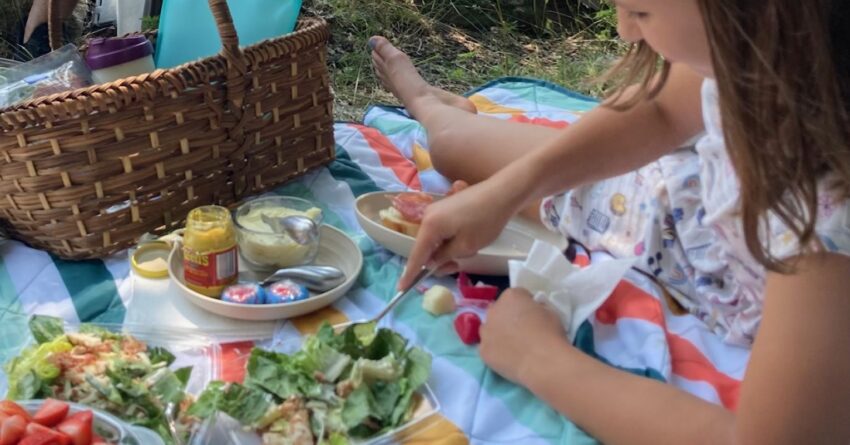
Source: Dona Matthews
I often find myself worrying about the increasing mental health challenges children and teens are experiencing. I know that the best solutions are long-term and aimed at the source of the problems. These solutions, when implemented, result in a healthier society. They mean addressing issues of poverty, gun violence, social media influence, educational inequities, environmental degradation, climate change, and more.
Changing the world in these big ways may sound formidable, but there are small actions you can take to increase the likelihood that your child will be at least somewhat resilient to the surrounding stressors and that they’ll acquire the skills and attitudes they need to be difference-makers who work toward those long-term solutions. One of those low-investment-high-return actions is to make space in your child’s life for spontaneity, self-discovery, and creativity.
Long, lazy days without schedules can be catalysts for self-discovery and creativity, and I recently had an experience that illustrates just what I’m talking about. My 9-year-old granddaughter was spending a few days with my husband and me this summer. Zoe enjoys excursions to the local dump, where we take bottles for recycling as well as any garbage or other recycling that’s missed the weekly pick-up. What she likes best at the dump is the Re-Use shack, where people leave the books, toys, and household objects they don’t need anymore. Through the years, she’s found many treasures there, and I’ve found a few good things too.
On this particular visit to the dump, Zoe’s eye was taken by a large old wicker basket. “Look, Nonna! There’s a picnic basket!” she said enthusiastically. “Can we take it?”
I said OK, and she said, “Can we have a picnic for lunch today?”
It was about 11 a.m. on a hot, sunny day. We were headed next to pick up some groceries and had the luxury of no other set-in-stone plans for the rest of the day. I liked the idea of a picnic and said yes.
By the time we got to the grocery store, Zoe had a complete list in her mind of what we needed for the old-fashioned picnic of her imagination: a baguette, cheese, salami, green salad, and a fruit tray. She carefully selected each of these items, consulting with me on details like seasoning and package size.
Back at home, we sliced the bread, carefully placed our purchases into the basket, and thought about what else we’d need. We added some butter and mustard to the basket and packed up some cutlery, napkins, and light bamboo plates. We put drinks into travel cups and got a blanket to sit on. I suggested we find a spot in our own backyard, where we’d have the luxury of chairs and other conveniences, but that wasn’t what Zoe had in mind. For it to be the picnic of her imagination, it couldn’t be at home. Rocks, trees, nature, maybe a water view.
I knew a spot that I thought was an easy walk away, close to a public dock where we’d have a view of the nearby lake, and we set out. Carrying our heavy picnic basket and bag of drinks on a hot summer day made the walk seem 10 times farther than I’d thought it was, but after several stops to rest, we arrived. We discussed possible places to set out the picnic. I liked the dock (which is rarely used), because it was flat, and there was a reduced likelihood of ants, but Zoe preferred a place under the trees on the nearby grass. Yes, it was sloping, stony, and uneven, but it was shady, and there was no chance anybody would come along and ask us to move. I reminded myself this picnic was hers, not mine, so we unrolled the blanket on the grassy slope, and set out our picnic.
We filled our plates, and Zoe found a comfortable place to recline. There was even a good big rock for her grandfather to sit on when he arrived a few minutes later. Looking out at the lake, she sighed with contentment, and said, “There isn’t a better spot for a picnic anywhere.”
The ants gave us long enough to enjoy the picnic before they invaded in force. As we packed it all back into the new old basket, we agreed it had been a wonderful, perfect way to spend part of our day.
I’m writing about Zoe’s picnic to show what can happen if you make space in your child’s life and your own for creative possibility. I’ve written elsewhere about the sense of flow associated with creativity, the experience of total absorption in an activity, an experience that results in a sense of happiness, calm, fulfillment. I think that’s exactly how Zoe and I both felt as we packed up to go home.
Creativity Essential Reads
Zoe’s picnic illustrates how creativity begins when a child finds something that engages their interest. It underlines how important it is for an adult to pay attention to the child’s curiosities and enthusiasms. It also shows the importance of letting the goals, activities, and products belong to the child. You can provide valuable support with your interest and encouragement, but do your best not to take over their ideas.
By giving your child opportunities for creative self-expression—whether writing, painting, drama, role-playing, music, puppetry, dance, or creating a picnic—you support their sense of well-being and resilience, and increase the likelihood of their creating happily productive lives for themself. You thereby contribute to your child having the skills and attitudes they’ll need to be difference-makers who make the world a safer, healthier place for everyone.
